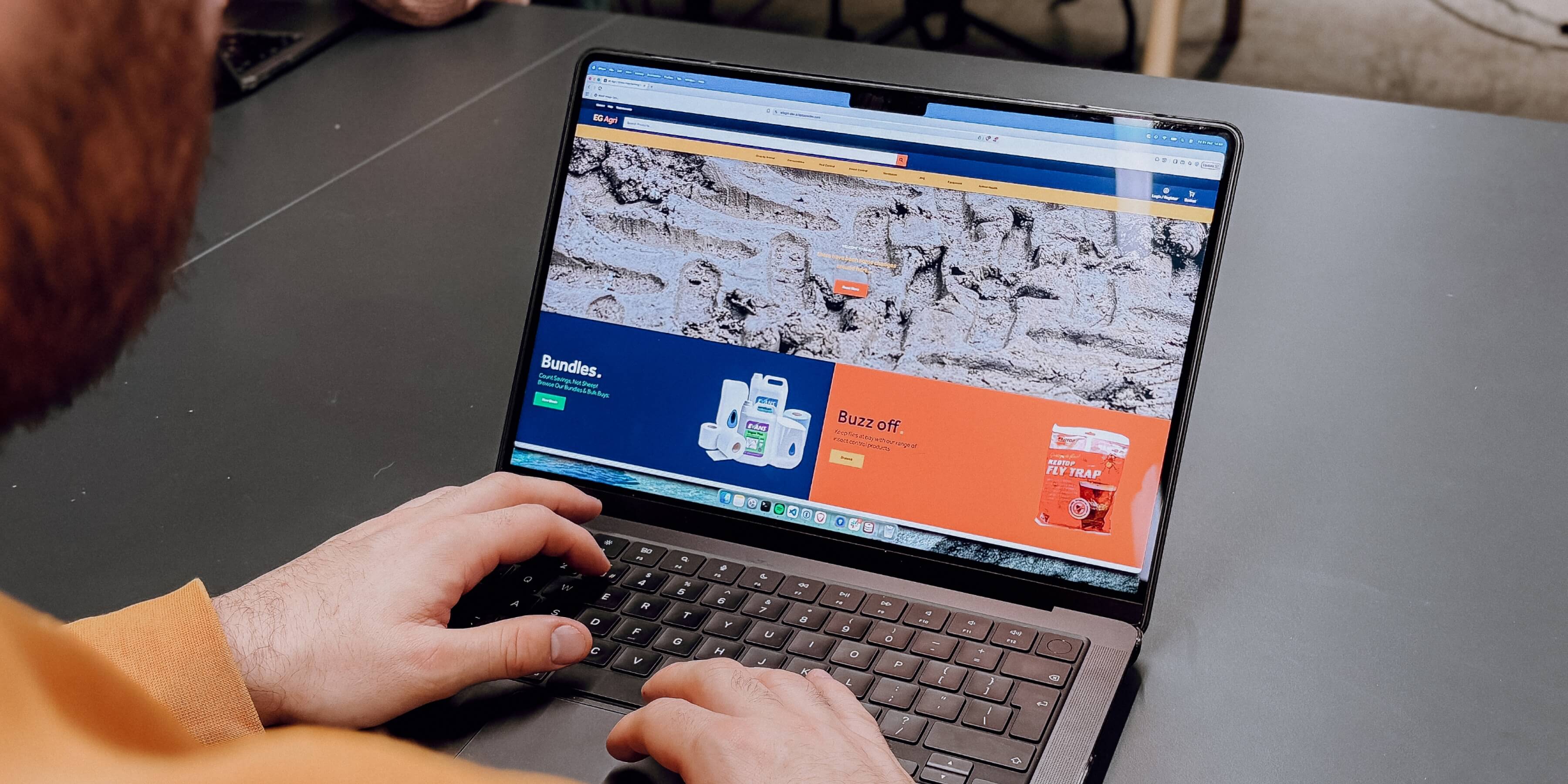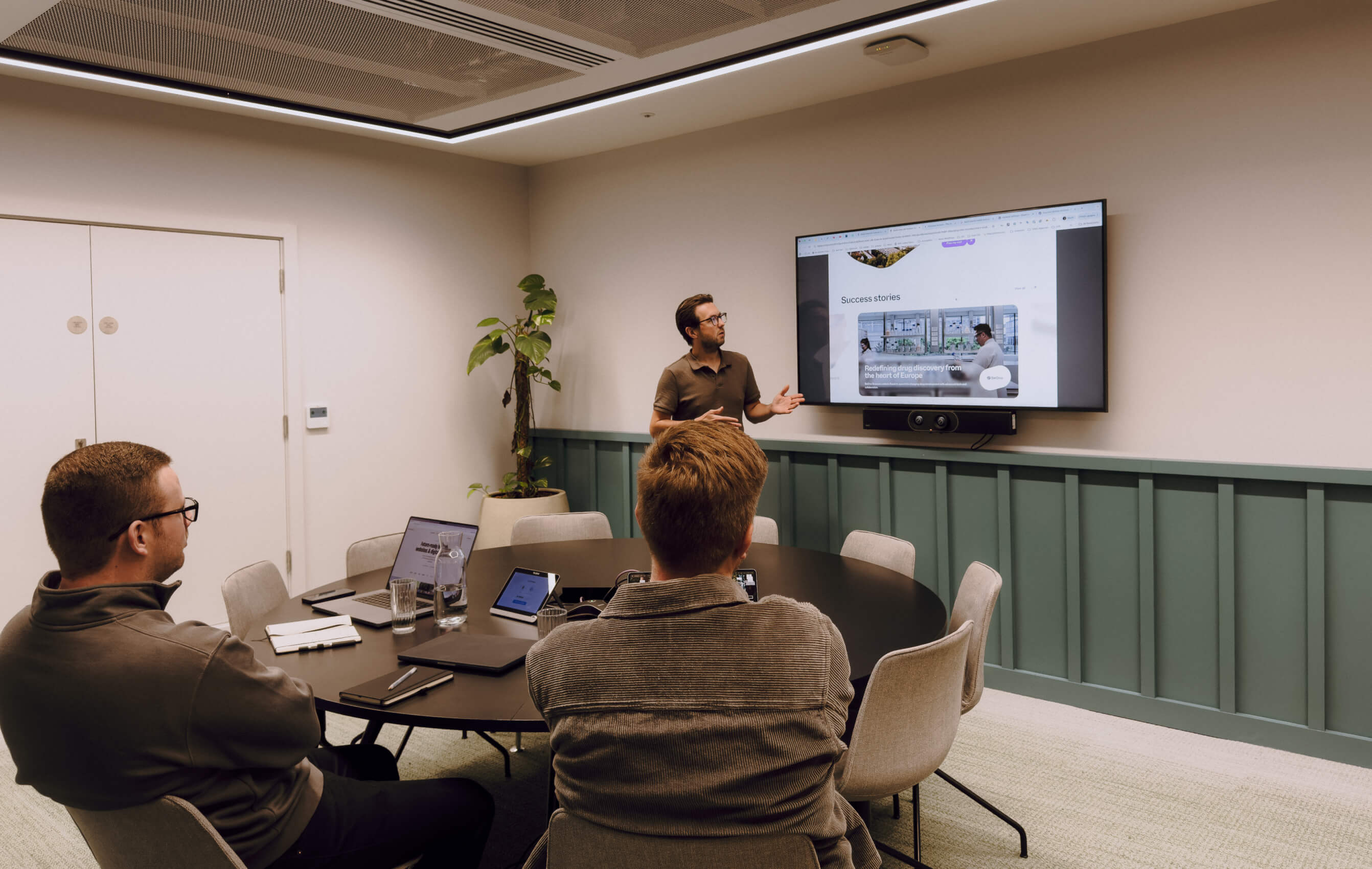Improving conversion rates through enhanced user experience

We’ve talked in blog posts previously about how focusing on delivering an elevated user experience helps your business. It’s pretty much a no-brainer. Good experience = good perception of your brand = visitor more likely to become a customer. In this post, we’ll focus on some more specific aspects of user experience to highlight how they can help to improve conversion rates on your website and bridge that all important gap between a good perception/impression of your organisation, and actually becoming a customer.
Research suggests that good user experience can increase website conversion rates by up to 200%. So what elements do you need to focus on to deliver this kind of return?
Read on to discover:
- A brief overview of conversion rate optimisation (CRO)
- How understanding user journeys is fundamental to CRO
- Some common tricks and best practice in optimising for conversion
- Implementing A/B testing
- The importance of continuous improvement and development
What is conversion rate optimisation?
Conversion rate optimisation (CRO) is the practice of utilising different tools and techniques, normally honed through testing and iterative improvement, to increase this rate at which users “convert” on your site. A “conversion” could be a purchase, making a donation, or submitting an enquiry. Conversion rate is basically the number of completions of that desired action, divided by the total number of visits to your website or app, presented as a percentage.
The tools and techniques used encompass everything from user experience (UX) design to copywriting – there are numerous elements that influence a user’s decision to complete an action on your site or not. As we’ll get to shortly, which elements work and which don’t isn’t set in stone – you’ll need test and refine what works specifically for your organisation.
It should also be noted that conversion rate is different to the number of conversions overall. Conversion rate is relative – you could have a high conversion rate but still a low number of conversions if a low number of users are actually landing on your site. That’s why conversion rate is a more useful metric to judge the performance of a website or landing page than total conversions. If you’re conversion rate is looking healthy but you want to increase conversions overall, then that becomes a wider conversation about other digital marketing tactics, including things like content and SEO.
Understanding the user journey
Before you can begin to make the tweaks and improvements need to optimise your conversion rate, it’s important that you get a good understand of where you are now. From landing on your site to converting (or not, as the case may be) – how are users interacting with you, moving through your site? Where are they spending time? Where are they dropping off? Where are most successful conversions coming from?
Tools like Google Analytics and HotJar are invaluable in helping you to track the user journey through your site and identify key areas where you might want to look at improvements or test subtle tweaks to navigation, copy or design.
A (very) quick guide to using GA4 to analyse the user journey
Universal Analytics used to have a really handy report called “Behaviour Flow” which was useful for examining user journeys and how they moved through your site. Unfortunately, this is no longer a default view/report in GA4, but not to worry, you can use “Explorations” to create a similar report and from there you can play around with clicking into different events. Just go to “Explore” > “Path exploration”. We’d recommend a good place to start is by clicking “Start over” and then selecting your conversion event (e.g. “enquiry”) as your endpoint. You can then add “Page title and screen name” as the previous steps to explore which pages users typically visit before converting. Here’s some more guidance from Google on how to create and use path explorations.

Optimising key pages for conversion rate
As we’ve already touched on, there is no one definitive answer to what specific elements or combinations of elements on a page will lead to more conversions. There are a lot of factors at play – such as what the “conversion” is and what’s being asked of the user, how they arrived on your site, what their intent was, etc. But we can be by a few best practices that provide a platform for testing and tweaking to your specific case.
There are number of factors to consider, and we can boil them down into 5 key areas. Your digital partner can obviously help you ensure you get all of these spot-on, but here are a few pointers.
1. Nail the copy
- Avoid generic phrases like “find out more” or “click here” for button text
- Use action-oriented language, focusing the verbs on what you want the user to do/what they can get from engaging with you – e.g. “Download a copy”
- Address the reader directly – e.g. “Do more with your digital”
2. Visual design and placement of call-to-actions (CTAs)
- Use contrasting colours to ensure buttons stand out (obviously ensuring the colours fit with your brand and design system)
- Make sure the buttons are big enough to stand out and be easily clickable but not so large that they overwhelm the page
- Utilise white space to make CTAs more prominent
- Position CTAs in prominent places on the page – i.e. above-the-fold – and repeat in logical places where the user will be ready to take action
3. Design for all devices
- Ensure that your whole site is responsive and any CTAs and buttons on key pages are visible and just as impactful on mobile.
- Consider a mobile-first design approach to strip back and prioritise key elements for viewing on mobile
4. Get your forms right
- If a form is embedded on the landing page, place it in a prominent position, ideally above-the-fold
- Rationalise the number of form fields as much as possible – no one wants to be confronted with a form with 10+ fields to fill in if they’re just looking to download a PDF. Longer forms may also cause privacy concerns for users – 65% of website visitors would choose no to submit a form if it required an excessive amount of personal information
5. Consider accessibility
- Accessibility should be a wider consideration for your website anyway, but ensuring you’re using sufficient colour contrast, alt text and also supporting the use of assistive technologies can help with conversion
A/B testing and analysis
The techniques we described in the previous section are essentially some “best practice” pointers that usually lead to better conversion rates. But what works best for you will depend on your specific product, service or offering and the needs and habits of your customers. The best thing to do when you’re trying to improve conversion rates is to test. Using a tool like VWO, you can conduct A/B testing, which enables you to show different versions of a page or element on your website to different users, and collect data on which leads to more conversions. When you’re conducting A/B testing, it’s important to remember a few things:
- Don’t test too many variables – if you change too many things between your versions, it can be difficult to pinpoint what the difference maker was in terms of converting. You can always run other tests in future if you’d like to test changing other elements
- Make sure you give your tests sufficient time to run – you can’t make sensible conclusions without decent data
- Have a clear hypothesis that you want to test going into the A/B testing period – i.e. avoid “I wonder what will happen if we change x,y,z”. Start with an assumption, like “I think we change x and y, conversions will go up” – and use this to guide your test
Continuous optimisation and improvement
Any good digital strategy places a healthy emphasis on continuous improvement. As the needs of your organisation and the expectations of your customers change, your approach will need to shift to meet them. As you collect data from users and customers interacting with you and you begin to learn about what works and what doesn’t, it’s important to have a foundation and framework in place to enable you to continually develop your digital experience to improve conversion rates.
Key takeaways
- Conversion rate optimisation isn’t an exact science, and involves a lot of testing and trialing different things to find out what works
- There are some best practices you can follow around things like copy, CTA design, responsiveness and accessibility to improve your baseline chances of driving conversions
- Continuous improvement and optimisation is a key part of ensuring your website or digital product keeps converting as the expectations of your customers change and your priorities shift
Need more advice on how to optimise your website or digital product to get more conversions? Start a project with us and we’ll instill conversion best practices from the very beginning. Get in touch for a chat and find out more.




